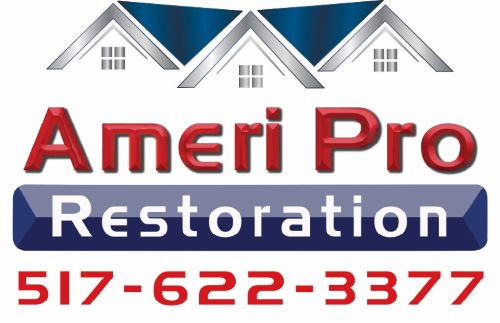Hidden water damage can manifest in subtle ways, often overlooked until significant problems arise. Musty odors, peeling paint, mold growth, and warping of materials are the key indicators. Discoloration on walls and ceilings, unexplained high water bills, and even subtle dripping sounds can also point towards hidden water damage. If left unaddressed, it can compromise the structural integrity of the home. Early detection is crucial to prevent costly repairs and potential health hazards. Ameri Pro Restoration provides top-notch water damage restoration services to restore your property and peace of mind efficiently and effectively.
Warning Signs of Water Damage Indicating a Hidden Problem
Are you worried about the musty odors in your home? Prompt action is the most important thing to do if you suspect hidden water damage. Various studies highlight the importance of early detection and prompt action to mitigate the risks associated with water damage. Regular inspections and awareness of these signs are crucial to prevent costly repairs and potential health hazards.
Specific hidden water damage signs to look out for include the following.
- Musty odors
A persistent damp or musty smell, especially in areas that are typically dry, can indicate hidden mold growth fueled by water damage. This earthy or mildew smell, even without any visible signs, indicates moisture and potential hidden leaks.
- Discoloration or water stains
Yellowish or brown stains on walls and ceilings are often a clear sign of water intrusion. Even clean water seeping into drywall can cause discoloration.
- Humidity
A tell-tale sign of water damage is increased humidity in your surroundings, or a generally damp feeling, indicating hidden water damage. Ensure adequate ventilation in your home, especially in areas of high moisture like the bathrooms, kitchen, and basement, to prevent moisture buildup.
- Peeling paint or wallpaper
Water seeping behind paint can cause it to detach from the surface, leading to peeling or bubbling. Examine walls near plumbing fixtures or windows to check the cause of the leak.
- Changes in flooring
Water damage can affect various flooring types, causing warping, buckling, or soft spots. Tiles crack and vinyl flooring loosens or shifts, signaling water damage under the surface.
| Fast fact: There has been a 70% increase in heavy downpours each year in the Eastern United States. |
- Sagging or warped ceiling
These can indicate a leak from above, potentially from roof damage or a plumbing issue. A drooping or sagging ceiling is a clear sign of water saturation weakening the ceiling materials.
- Mold growth
While often visible, mold can grow in hidden areas like behind walls or under floors, fueled by moisture. Pay attention to high-humidity areas like the basement, crawl space, bathroom, and behind drywall to spot the dark patches.
- Condensation or fogging on windows
This can indicate excessive moisture in the air, potentially linked to a leak or poor ventilation. Moisture buildup inside walls leads to increased humidity levels. Look for condensation in rooms near plumbing fixtures, basements, or windows adjacent to the exterior walls to check the moisture source.
- Dripping sounds
Even if you can’t see the leak, dripping sounds behind walls or ceilings can signal a hidden water issue. Even faint dripping sounds after a period of heavy rain can indicate a leak in the roof or plumbing.
| Did you know? Just one inch of water in the typical home can cause up to $25000 worth of damage if left unaddressed, according to FEMA. |
- Sudden increase in utility bills
Unexplained high water bills can point to a hidden leak somewhere in the plumbing. Smart leak detectors are designed to prevent water damage by detecting leaks early, enabling prompt action.
- Soft or spongy walls
When you press on walls and ceilings and feel a soft, spongy texture, it could indicate rotting material and hidden water damage. Use a moisture meter to detect dampness in the walls and floors.
- Hairline Cracks
Hidden water damage due to poor drainage or underground plumbing leaks can eventually affect the very foundations of your structure. If you notice hairline cracks in the wall, or floors, and your doors and windows don’t close properly, it’s a clear sign that your home’s foundation has shifted due to water damage. It’s best to consult with a professional water damage restoration specialist to address the issues on time.
Conclusion
Water damage can be expensive to repair. Identifying the signs of hidden water damage is crucial to prevent costly repairs and potential health issues. Regular inspections, early detection, proper ventilation, and preventive measures can ensure a safe and dry structure. Consider professional help if you suspect hidden water damage to prevent further deterioration.
Frequently Asked Questions (FAQs)
1. What are the first signs of hidden water damage?
Early signs include peeling paint, musty odors, and unexplained increases in water bills.
2. Can I fix hidden water damage myself?
Minor issues can be DIY’d, but mold or structural damage needs professional attention.
3. How much does water damage repair cost?
Depending on the extent, it can range from $500 for minor fixes to over $10,000 for full restoration.
4. Will homeowners insurance cover hidden water damage?
It depends on your policy and the cause. Gradual leaks often aren’t covered, but sudden bursts might be.
5. Is water damage dangerous to health?
Yes. Prolonged exposure can lead to mold-related illnesses, asthma, and other respiratory issues.
6. How often should I inspect my home for water damage?
At least twice a year—ideally before and after rainy seasons.

